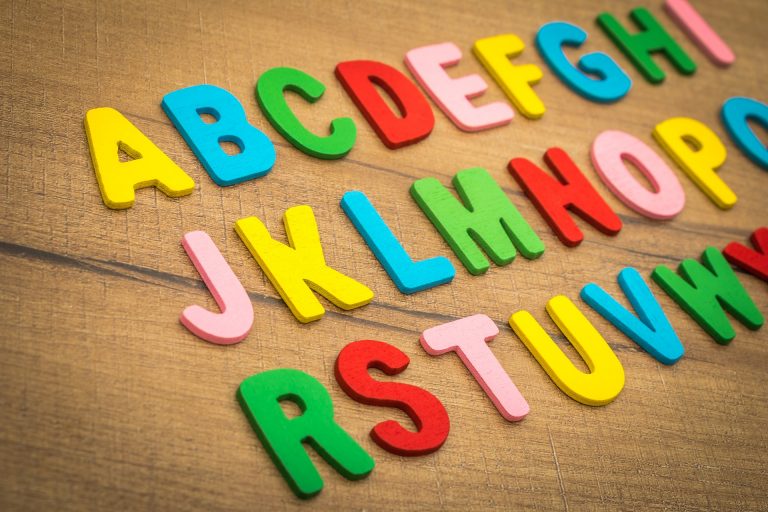How to Sing Better Now with a Relaxed Jaw!
After another exhausting day of teaching lessons at the college and for my private singing studio, I’ve been pondering how many times I had to give the same instruction, over and over, to almost every student, male or female. What is the one thing that so many singers struggle with— but don’t even know is holding them back? Drum roll, please… A tight jaw position! Read on to learn how to sing better now with a relaxed jaw!
I hear it multiple times a day— “I can’t hit that note”. “This song is to high for me”. “I’m not a soprano, I’m an alto”. “My throat hurts when I sing”. “I’m hoarse after I sing.” What is going on here?! Why do so many singers have the same issues?
JAW TENSION !
That’s right, so many people have a super-tight jaw when they sing, and try to approach their singing from the same tense, horizontal jaw position that they use when they talk. Singing is not talking, and it requires a much more relaxed, vertical jaw position, where the jaw drops down and back as you sing through the vowel sounds in the lyrics of your song.
So… what’s the first thing you need to do to fix it?
Tip #1:
Perform the straw test. Take a pen, pencil or straw, and hold it from the tip of your nose down to your chin while looking in a mirror. Now turn sideways a bit and drop your jaw as much as you comfortably can. As you look in the mirror, the straw should form a diagonal line that drops back from the nose to the chin. If it drops straight down, or worse, forward, your jaw is in the wrong position for singing!
Now, the position of the relaxed jaw is just the beginning of the fix. How do we truly relax the jaw for singing and create enough space for the voice, when we spend the whole day speaking with tense muscles? Many of us also clench our jaw all day, even when we’re not talking. Worse yet, many of us even sleep with a clenched jaw and grind our teeth at night!
In a nutshell, you have to train your jaw to relax when you sing, just like you train in so many other aspects of your singing technique. And the more you do it, the more relaxed and free your singing voice will become. So many problems start to correct themselves automatically when you let go of a tight jaw.
So now you may be asking, “Okay, how do I do that?”
There are a number of very effective techniques you can do to release the jaw and finally free your voice. But before we discuss them, if you have any jaw issues like TMJ (Temporomandibular Joint Disorder) which can include popping, cracking, spasms and pain in the jaws— please consult your physician before trying the exercises that follow.* Also, for more in-depth information about jaw tension and TMJ issues, visit my earlier post:
https://nadiasmelser.com/tmj-and-singing-get-help-here-now/
Tip #2
First, practice “dumb jaw”. Pretend you are the dumbest person on earth, and say “duh”. Your jaw should fall into a natural, relaxed position that releases your swallowing muscles in the throat, which are the ones that get in the way when you’re trying to sing. Notice how open and devoid of tension the throat area feels. Try to emulate that relaxed feeling when you sing.
Tip #3
Learn to make all your vowels in the “duh” position. Vowels are the carriers of the voice. They keep your throat open and are responsible for about 99% of your singing sound. (Consonants are necessary, but generally interfere with or stop your airflow). When we talk, we move our jaw up and down to change from one vowel to another. But in singing, we need to make our vowels from the relaxed, open-throated “duh” position.
Go in front of the mirror, say, “duh” and using your hand, hold your dropped jaw firmly in that position. Now, without using your jaw, say a variety of vowels:
AH- EH- IH- EE- OH- OO.
You’ll notice that when your jaw stays relaxed, the back of the tongue changes its position automatically to give you the vowel sound you want. And on OH and OO, you also should notice your lips puckering forward to help make the vowel.
(Make sure your tongue doesn’t pull back at any time. The tip should be resting gently inside your lower lip when you breathe or when forming any vowels with a dropped jaw).
Now try singing a single pitch while moving through the vowels in this new way. Your throat stays open and relaxed at all times!
We have to momentarily move the jaw to sing most consonants in your songs, but if you keep relaxing back to your “duh” position for every vowel in each syllable of your lyrics, you will enjoy free singing like never before!
Don’t worry if your vowels sound a little thick and “funky” in this new position. With practice, the muscles in the back of your tongue will respond to the new activity, and your vowels will quickly clear up and sound very natural when you sing.
Tip #4
Use a SAFE bite block. Our biting reflex is incredibly strong, and training it out to relax into the “duh” position can be challenging. One way to fast-track your progress is to use one or two clean fingertips (stacked one on top of the other) between your back teeth when you’re practicing— while you do breathing exercises and while you sing. This helps to block your biting reflex and trains the jaw to relax.
WARNING: NEVER PUT ANY FOREIGN OBJECTS IN YOUR MOUTH!!! Your fingers are attached to your hand and aren’t going anywhere, but because of the intense biting force of your jaws, anything else could pop out and cause choking.
Tip #5
Use that mirror! When you’re learning to relax your jaw for singing, or to do anything else for that matter, you draw on different learning modes— visual (seeing), aural (hearing) and kinesthetic (physical sensation). Early in your singing training, you may not be able to accurately discern correct sounds or sensations. But, you can easily see in a mirror if your jaw is relaxed and stable as you breathe in and out, and as you are forming your vowel sounds. (You can also check that your tongue is relaxed and covering the lower teeth while singing vowels, so that the tip of the tongue is gently resting just inside the lower lip). Practice in front of the mirror! You’ll be able to catch yourself tensing your jaw and then can make immediate corrections, which will groove in new habits faster and give you more successful singing, much sooner.
Tip #6
Size matters. Your natural, relaxed “duh” position works fine for most of your middle range and lowest notes. But here’s an important point— the higher the pitch you are going to sing, the more relaxed and open space you need to resonate that pitch.
Yawn a few times and feel the stretch and increased space at the beginning of the yawn. Then think of yawning in a bigger and bigger space as you sing higher notes. You’ll notice that when your “duh” position gets even more open and relaxed, those higher pitches come out much more easily!
I can’t emphasize enough how important it is to sing with a relaxed jaw!
From the first moment you start taking in air to sing, your jaw should be in that “duh” position. That will trigger a deeper, quieter breath that will make everything work better, even before you sing your first note! You’ll be connecting with your rib, diaphragm and core muscles, which ultimately control so much about your vocal production. And when you do start singing, dropping that jaw for relaxed vowel sounds will make 99% of your singing tension-free, and the quick jaw closures needed to sing your consonants will not cause you to feel tight or stressed as you sing through your songs.
High notes? No problem. Vocal tension? Gone. Hoarse voice? A thing of the past. Now, while there are so many other aspects of technique that can negatively or positively impact your voice, learning to sing with a relaxed jaw is the best and greatest start you can possibly make!
Happy Singing, everyone!
*THIS POST IS FOR INFORMATIONAL PURPOSES ONLY. CHECK WITH YOUR DOCTOR BEFORE STARTING ANY NEW EXERCISE PLAN OR HEALTH PROTOCOL.







